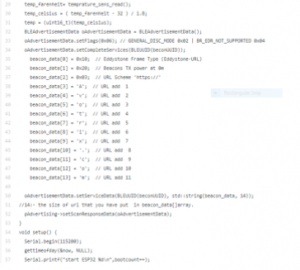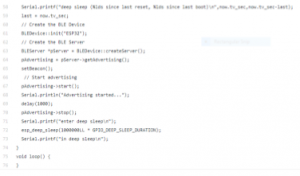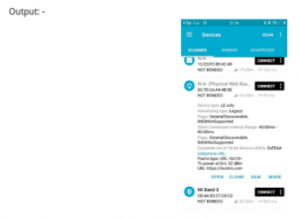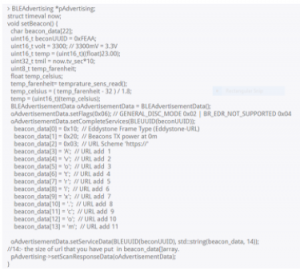
22 Sep BLE Advertising Using ESP32
So, what exactly is BLE?
Bluetooth Low Energy (BLE) is basically a power-conserving variant of Bluetooth. BLE’s primary application is a short-distance transmission of small amounts of data.
How do the BLE Server and Client work?
There are two types of devices the server and the client. The esp32 can act as a server or client
The server advertises its existence, so it can be found by other devices and contains the data that the client can read. The client scans the nearby devices, and when2 it finds the server it is looking for; it establishes a connection and listens for incoming data. This is called point-to-point communication.
BLE Supports Two Modes
- Broadcast mode: the server broadcasts data to many clients that are connected.
- Mesh network: All the devices are connected. This is a many to many connections.
Source Code



Steps: –
1) put source code in Arduino IDE
2) Download the uRF android app from play store
2) Download the uRF android app from play store
3) Start Bluetooth of your cellphone
4) Scan the device and go to the bonded tab and see the following details shown in the image.

Explanation: –
1) Include all the necessary libraries regarding BLE

2) Initialize wakeup, boots data of rtc memory

3) Generate UUId and set advertising message on BLE

4) Setup a BLE setting and create a BLE device and start advertising

Today, Bluetooth technology is already proliferated into products from key players in the cellular industry like Apple and Google with Samsung and Blackberry the following suit. Most Apple products have stable BLE support when Android platforms are still struggling to provide good API to hardware functionality. The advantage of BLE is its ability to support an asymmetrical hardware implementation: a complex multifunctional device like a cell phone will support the full spectrum of the Bluetooth 4.0 specification, while sensor nodes may be implemented as an inexpensive resource-limited design, supporting just a subset of the 4.0 specification but sufficient for that device/sensor.
Multi-benefits of BLE
BLE has innumerable benefits, and the doors have been opened wide for small, nimble product designers to gain access to a potentially massive market with task-specific, creative, and innovative products on a relatively modest design budget. You can purchase all-in-one radio-plus-microcontroller (system-on-chip) solutions today for well under $2 per chip and in low volumes, which is well below the total overall price point of similar wireless technologies such as WiFi, GSM, Zigbee, etc. BLE empowers you to design viable products today that can talk to any modern mobile platform using chips, tools, and standards that are easy to access.
If you are still facing issue regarding this topic Feel free to Ask Doubts in the Comment Box Below and Don’t Forget to Follow us on Social Media Networks




